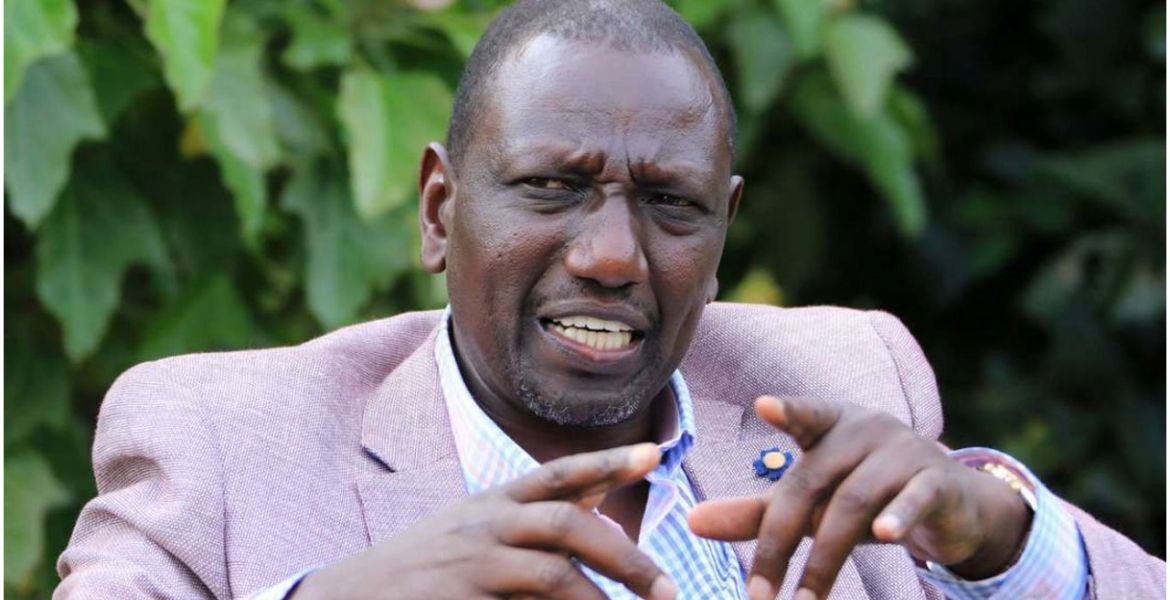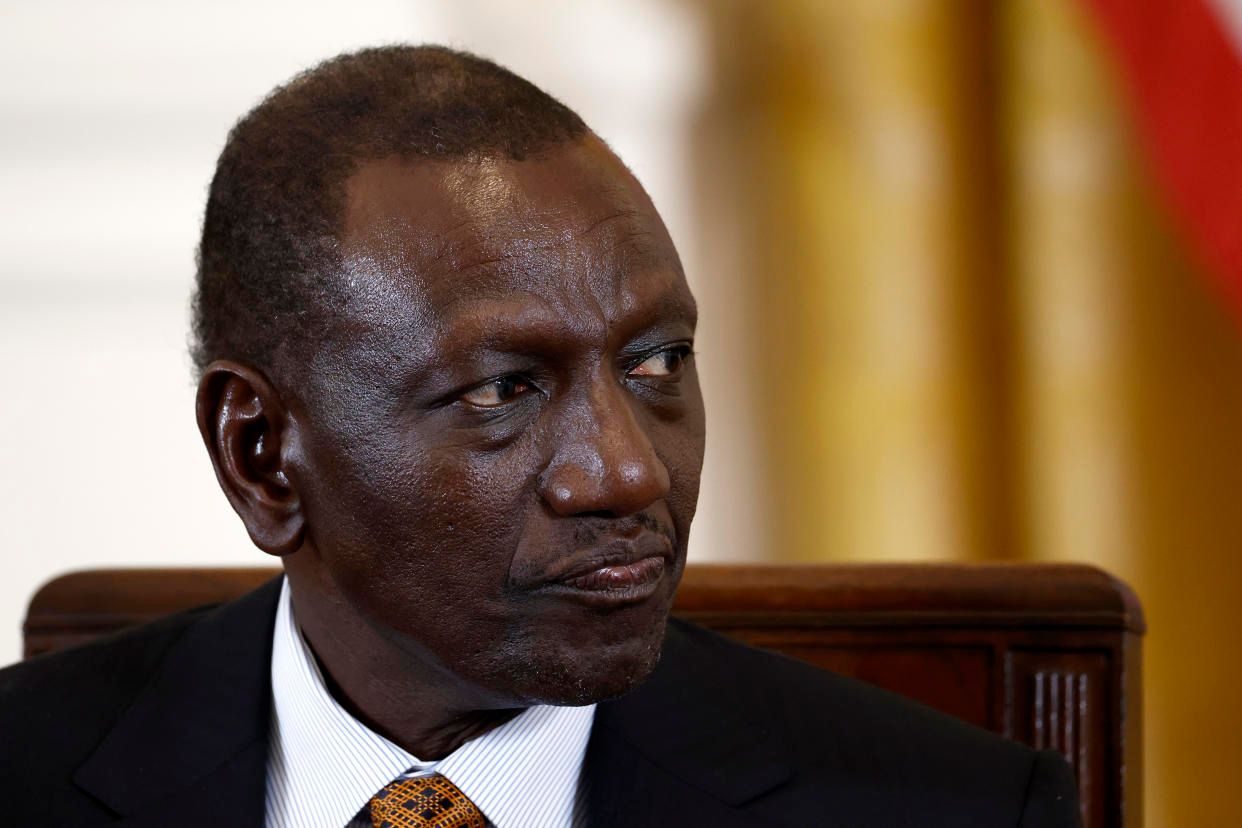A viral rumor alleges that President William Ruto has four holes at the back of his head.
The theory has gained traction online, sparking intense and humorous speculation.
Some believe the holes are the result of surgery, others claim it’s a sign of divine selection.
Fringe groups even suggest high-tech implants or symbolic meaning.
In reality, it’s likely a meme gone wild — but one that reveals how politics is processed in Kenya’s digital age.
Why People Think President Ruto Has Four Holes in His Head
A Quick Recap of This Story
The Viral Puzzle Behind Ruto’s Skull
In a time when political satire spreads faster than fact, few rumors have captivated the Kenyan online space as much as the one claiming that President William Ruto has four peculiar holes on the back of his head. While there is no official report, confirmed medical record, or clear photographic evidence supporting this claim, the idea has evolved into a meme of mythological proportions.
For some, it’s a hilarious exaggeration, born out of a poorly angled photo or edited video. For others, it’s something deeper — a coded symbol, a secret known to those in power, or a modern-day parable about leadership. What began as a joke has morphed into full-blown commentary, drawing in conspiracy theorists, satirical artists, and ordinary Kenyans all crafting their own versions of the truth.
Let’s unravel the top seven speculative explanations — from the believable to the bizarre.
1. Scars from Surgery or Childhood Trauma
One of the most grounded — and perhaps the most logical — theories circulating online is that the so-called "holes" might actually be old scars or the aftermath of a childhood surgery. In many African contexts, especially during earlier decades with limited access to specialized care, minor head injuries, untreated infections, or even ritual-based practices could leave behind physical marks.
Scalp injuries, particularly from diseases like meningitis or skin infections like tinea capitis, were common among children growing up in rural areas, and they often left long-term indentations. Add to that the possibility of small, healed lesions or skin conditions — and you could end up with depressions on the skull that, in the right light or camera angle, look like unnatural holes. Still, none of these medical scenarios are confirmed in Ruto’s case, and no one from the presidential office has ever acknowledged such an issue.
2. Hair Patterns and Optical Illusions

Another widespread theory suggests that the entire conversation is being blown out of proportion by the tricks of lighting, camera resolution, and natural hair growth patterns. When Ruto appears with a closely shaved head — particularly under stage lights or during press briefings — the shadows on his scalp can form visual impressions of circles or pits, especially if the skin is not perfectly smooth.
Human perception is heavily influenced by contrast and shape recognition. What might be ordinary skin texture can appear unusual in photos taken from a distance or zoomed in awkwardly. Given the culture of screenshotting and meme-creation online, it’s easy to see how a normal image can be distorted into something seemingly surreal. If anything, this theory shows how easily the digital lens can twist reality — and how satire often springs from misunderstanding.
3. Spiritual Marks or Ancestral Symbols
Venturing into the mystical, there is a corner of the internet that genuinely believes the marks — real or imagined — are not accidental but rather spiritually significant. In some African traditional beliefs, unusual marks on the body, especially the head, are seen as signs of divine selection, ancestral communication, or spiritual power. Could the four holes be viewed as sacred symbols, perhaps denoting protection or a prophetic destiny?
President Ruto’s deep connection to Christianity and frequent use of spiritual rhetoric have led some to fuse his public image with mystical speculation. Although mainstream religious voices have not weighed in, the belief that certain leaders are marked by forces beyond the physical world continues to shape how people perceive authority. Whether as a joke or as genuine belief, this interpretation adds a mystical flavor to the meme.
4. Cyborg Conspiracy: High-Tech Implant Theory
This is where the rabbit hole takes a sharp turn into sci-fi absurdity. A growing number of online commentators — especially among younger netizens — have suggested that Ruto might have undergone high-tech enhancements, possibly in the form of implants, sensors, or neural devices. In this theory, the “holes” serve as input ports, data receivers, or even mind control interfaces.
While this might sound ridiculous (and it is), such ideas resonate in an age where people are growing suspicious of political elites, advanced surveillance, and hidden technologies. Elon Musk’s Neuralink has made the concept of brain implants plausible, and conspiracy theorists are eager to apply that logic to anyone in power. Of course, there’s no evidence Ruto has undergone any such procedure — but as a meme, it serves as a satirical metaphor for the techno-elite dystopia many feel is already emerging.
5. Political Metaphor: The “Holes” in Leadership
Perhaps the most intelligent interpretation of this theory is that it is entirely metaphorical. The “four holes” aren’t physical but symbolic — representing gaps in leadership, accountability, or vision. It could be a digital protest in disguise, a way for frustrated citizens to mock what they perceive as mental or moral blind spots in the president’s policies.
This satirical lens reflects a long-standing African tradition of using humor to critique power. In countries where open dissent can sometimes attract consequences, turning criticism into comedy — or memes — is a safer, more viral way to express dissatisfaction. Here, Ruto’s head becomes a canvas onto which people project their grievances, shaped as humor but edged with truth.
6. A Hoax Born from a Doctored Image

Digging through archives of older tweets and meme folders, some internet detectives have traced the origins of the “four holes” theory to what appears to be a doctored photo or low-quality video clip. It’s possible that a single, poorly edited or heavily compressed image circulated during Ruto’s campaign season, gained traction, and mutated into legend.
Once a visual is taken out of context — especially in the meme economy — it becomes impossible to control. The image is re-edited, exaggerated, repurposed for every possible interpretation. As with many viral conspiracies, the truth gets buried under layers of joke captions, emojis, and remix culture. The hoax itself becomes part of national digital folklore.
7. Meme Culture as Political Resistance
At its core, the “four holes” myth is not about biology — it’s about the way Kenyans process power in the internet age. Satire is not just a coping mechanism; it’s a tool for resistance, storytelling, and collective commentary. The meme isn’t merely absurd. It’s effective. It gets people talking, questioning, laughing, and, perhaps most importantly, participating in political discourse in a language that feels their own.
What we see here is a collision between digital literacy, cultural humor, and political frustration. The meme becomes an open canvas: some use it to joke, others to critique, others to mythologize. It’s democratic in nature — it invites remix, interpretation, and rejection.
Final Thought: Holes in the Truth or Truth in the Holes?
So, does President William Ruto have four holes in the back of his head?
Highly unlikely.
But that’s beside the point. Whether real, exaggerated, or entirely fictional, the rumor has become a mirror for modern Kenya — a society grappling with power, transparency, faith, and technology, all while staying sharply humorous.
The “four holes” are not about medical facts. They’re about symbolism, resistance, and digital mythology — a reminder that in today’s world, politics isn’t just practiced. It’s memed.
And sometimes, what’s funny today becomes tomorrow’s folklore.

0 comments
Be the first one to comment, but before that...
Here are some best practices for writing comments: